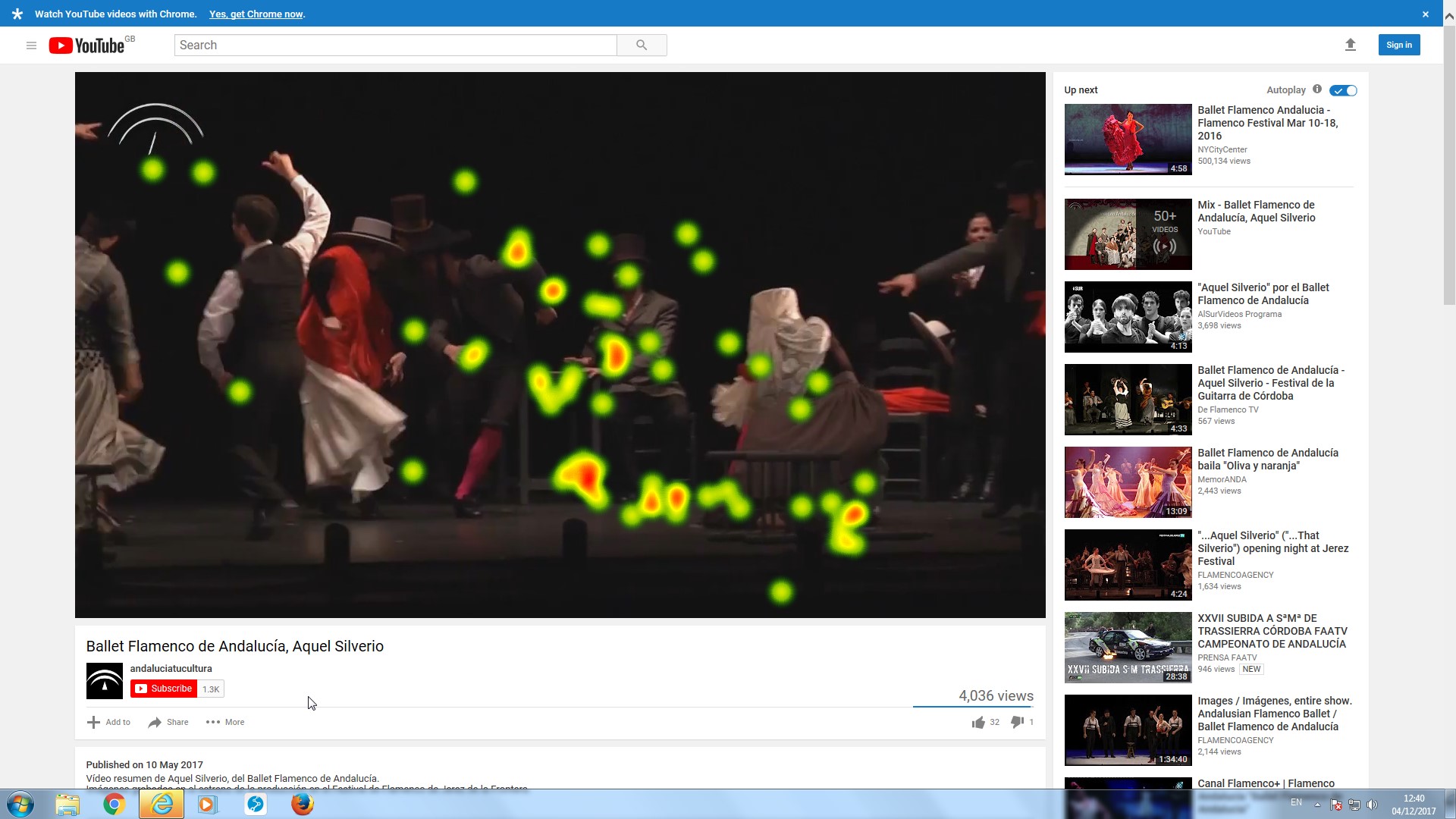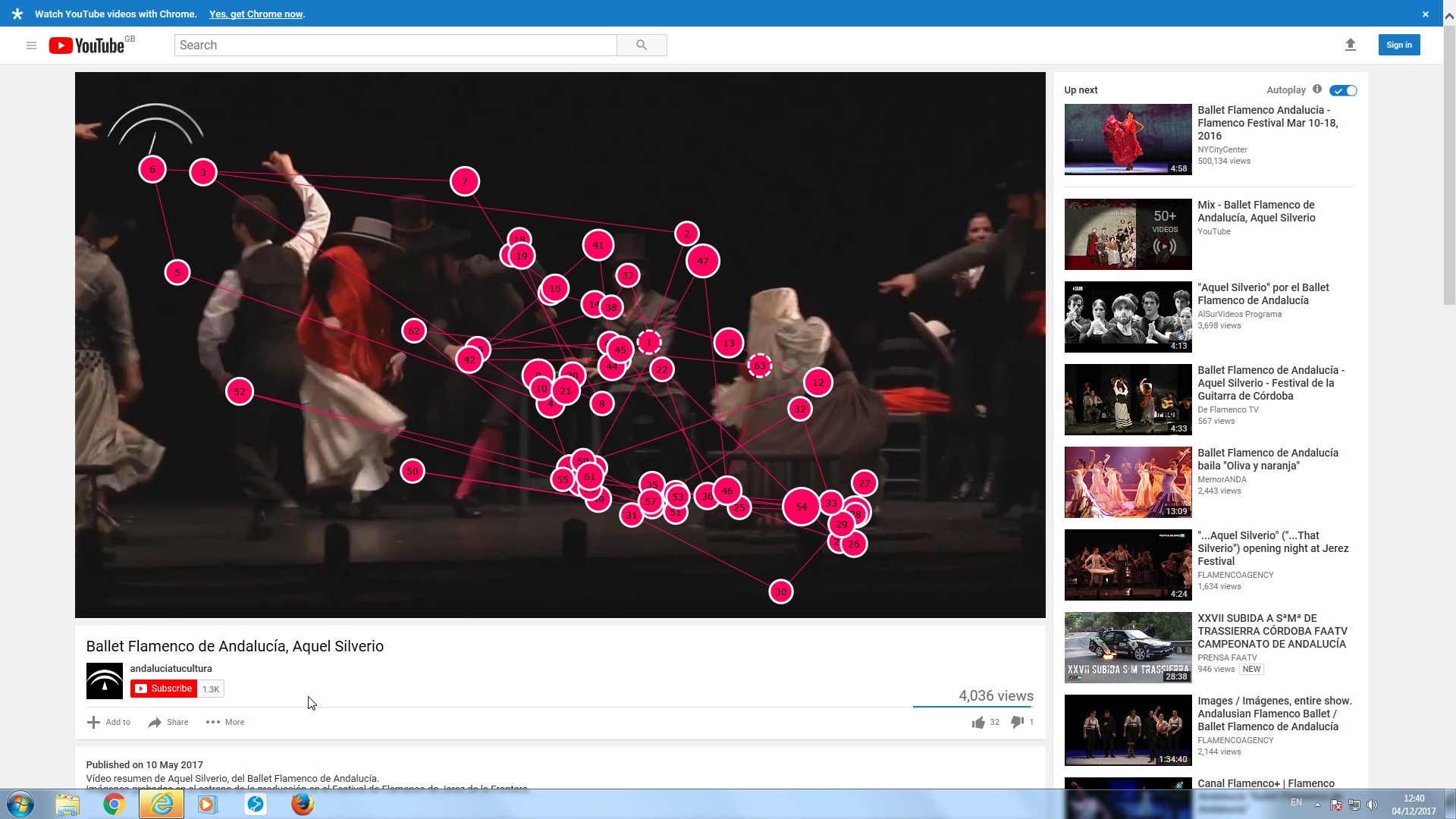In the arena of performing arts, traditional dance and more specifically to flamenco dance, tracking eye movements can give us fascinating insights into professional training, marketing and choreographic design whilst revealing a few things about human tendencies.
Gaze plots and Heat maps are data visualizations that can communicate important aspects of visual behavior clearly and with great power.
Gaze plots show the location, order, and time spent looking at locations on the stimulus. So the primary function of the gaze plot is to reveal the time sequence of looking or where we look and when we look there. Time spent looking, most commonly expressed as fixation duration, is shown by the diameter of the fixation circles.
The longer the look, the larger the circle.
Here is an example of a gaze plot for a single eye tracking participant while watching the video “Aquel Silverio” in YouTube (https://www.youtube.com/watch?v=G2aifnEn_8I ).
This gaze plot depicts a looking pattern of a viewer who placed longer eye fixations in the center of the video sequences.
Heat maps show how looking is distributed over the stimulus. In contrast to the gaze plot, there is no information about the order of looking in a static heat map. Neither is the focus on individual fixations. Rather, heat maps are a visualization that can effectively reveal the focus of visual attention for dozens or even hundreds of participants at a time.
Choosing the right basis for constructing a heat map is the critical first step. And to do it right, one must have the study objective in mind and the point to be made with the visualization.
Let’s suppose that our research goal is to increase understanding of choreographic principles to enhance audience engagement, and our research involves the analysis of changes in the aesthetic design of audiovisual elements in a dance performance such as sound and dancers’ customs.
Since the aesthetic design involves a manipulation intended to affect a cognitive process, namely effort, fixation duration is the appropriate eye tracking measure. In this case, we would create duration-based heat maps for the current and proposed designs for sound and dancers’ customes showing visibly reduced heat in the redesign.


Leave a Reply